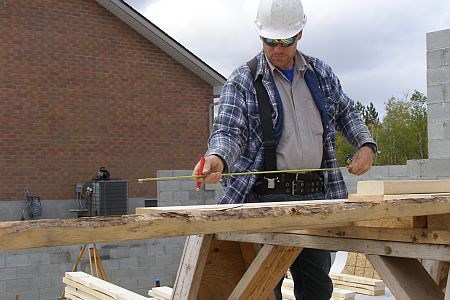A string of construction-related deaths in Toronto and Ottawa through the winter months have sparked the creation of a provincial task force to examine health and safety, providing industry with cautious hope future tragedies may be prevented.
A string of construction-related deaths in Toronto and Ottawa through the winter months have sparked the creation of a provincial task force to examine health and safety, providing industry with cautious hope future tragedies may be prevented.
“It would be a double tragedy if the Ministry of Labour did not use these events to not initiate something to see how we can do things better,” says Ian Cunningham, president of the Toronto-based Council of Ontario Construction Associations, which represents more than 30,000 members across the province.
“At the end of the day, what we would like is a much stronger culture of safety on every construction work site and whatever we can do to put that in place and bring that about would serve our interests well.”
In response to the fatalities, the province announced in late January the formation of an expert advisory panel to undergo a comprehensive review of Ontario’s occupational health and safety prevention and enforcement system.
The panel will be made up of safety experts from labour, employers and academic institutions, and will seek to recommend structural, operational and policy improvements. Target areas will include overall safety practices in the workplace and for entry-level training, the impact of the underground economy on health and safety, and how existing legislation serves worker safety. The panel will report back to Labour Minister Peter Fonseca in late fall 2010.
While few details have emerged as to the exact composition of the board, Cunningham says he hopes and expects to examine items like mandatory entry-level training for construction workers and mandatory supervisory training.
These concerns are mirrored by Patrick Dillon, business manager with the Provincial Building and Construction Trades Council of Ontario, an umbrella organization representing 150,000 workers.
“One fatality is one too many,” says Dillon. “It’s unnecessary.”
If the process is done right and results in real outcomes with real regulations, the end result will actually attract business to Ontario, rather than drive it away as is the assumption, he says.
“Every regulation is written in someone’s blood,” says Dillon. “People think that reducing red tape might help but in fact it’s just the opposite. Nobody put some in place because it was not needed.”
With an estimated 300,000 workers in the construction industry across Ontario, many are left vulnerable by what he calls flaws in the provincial system. The Occupational Health and Safety Act is outdated, he argues, leaving problems like legislative loopholes which are often exploited by less-than-scrupulous businesses. Honest firms are then left to play by the rules at a disadvantage, while those working under the radar are subject to dangerous conditions.
Other areas for possible consideration by the panel include the realm of health and safety committees.
While businesses are mandated to have such committees, Dillon laments the lack of controls in place for the province to follow through on their individual findings, either through auditing or the simple collection of information. He also suggests that provincial inspectors should be able to analyze the results of these committees’ findings and make active recommendations to the province to either improve on common problems or accept best-practice concepts. Until then, however, there remains “no accountability” for the work being done by these groups, says Dillon. Other perceived flaws in the provincial system include the incentive system through the Workplace Safety and Insurance Board (WSIB).
Incentive programs available through the WSIB allow for lower premiums if a business has a record of no lost-time injury claims, which in many cases can encourage bad or even fraudulent reporting, leaving victims without a voice and without recourse, he says.
“Just because you have a zero record as far as registering lost-time injury claims doesn’t mean there weren’t incidents in the workplace because incentives, I think, encourage bad reporting practices,” he says. “You keep those bad reporting practices going on long enough, you’re going to kill somebody.”
www.ontariobuildingtrades.com www.coca.on.ca
